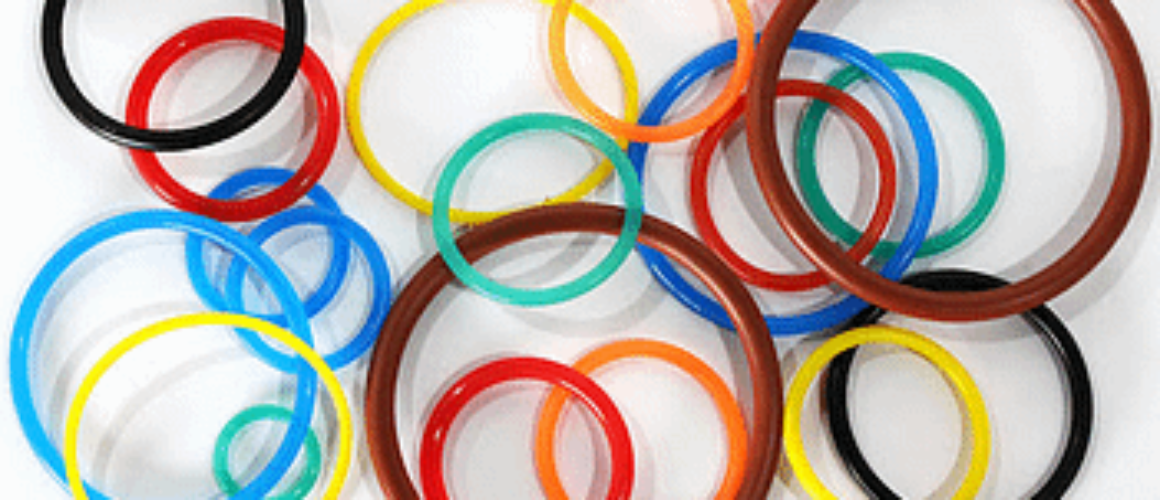What Causes Failure Of O Rings?
O Rings are the most commonly used seals and are unlike most of the materials that engineers and designers encounter. As the name implies, Rubber O Rings are shaped like a doughnut & are installed in cavities known as glands and then compressed. The resulting zero clearance within the gland provides the seal that blocks the flow of liquids and gases. The success of this O Ring requires careful design, selection, and installation procedures.
The combination of stresses on the O Rings can be complex and difficult to evaluate. Therefore, it is crucial that both the ORing compound and the Sizes should be tested in the real environment of its service. Below you’ll find the most common reasons that cause O Ring failure:
- Improper Gland Design
- Incorrect ORing Size
- Incompatibility Of ORing Material
- Improper ORing Installation
- Inadequate ORing Lubrication
Also Read: Causes of Rubber Parts Deterioration
10 Most Common Types Of ORing Failure
- Abrasion Of Rubber ORings – This is very common in dynamic applications. Abrasion occurs due to repetitive contact between the O Ring surface and the housing resulting in excessive friction between the two. Improper lubrication or surface finish of the metalwork increases this risk.
- Chemical Attack On Rubber ORings – Sometimes chemicals will react with certain elastomers. This results in an increase in cross-link density, resulting in a hard and brittle material and reduces the ability to provide a reaction force. Occasionally cross-link density may reduce, resulting in a softer tacky material, which leads to a loss of its original shape and integrity.
- Swelling Of Rubber ORings – Swelling is caused by the ingress of media into the elastomer, as the result of a chemical similarity between the compound and the media. The increased seal volume can lead to gland fill, extrusion and loss of sealing. Chemical swell can also result in a loss of physical properties such as tensile strength.
- Poor Compression Set Of ORings – Physical and chemical changes can occur to an elastomer at elevated temperatures that result in set. Cross-link density can increase, this results in the ORing losing its elasticity and ability to return back to the original shape, this is a permanent chemical change. The reduction in cross section results in a lower contact sealing force, which increases the risk of leakage in systems where thermal and pressure cycling occurs. Other causes include improper gland design, volume swell due to system fluid and incomplete curing of the seal during production.
- Extrusion and Nibbling On O Rings – High stresses, usually as a result of high pressures, forces the material into the clearance gap, this process is typically called extrusion. Pulses of high pressure can cause the clearance gap between the mating edges to open and close. This can lead to the ORing becoming trapped between the sharp edges of the mating surfaces, resulting in physical damage to the seal surface often referred to as nibbling.
Also Read: A Guide To Know The Difference Between Silicone Rubber & EPDM !!
- Explosive Decompression On O-Rings– When elastomer seals are exposed to high-pressure gas at elevated temperatures for a prolonged period of time the gas absorbs into the polymer compound. When the external pressure is reduced, the gas dissolved within the material comes out of solution to form micro bubbles. As the gas expands, it will permeate out of the material. Failure occurs if the rate of decompression and expansion is high, and the trapped gas within the seal expands beyond the materials ability to contain the gas bubbles.
- Damage Of ORings During Installation – Installation damage can take a wide range of forms, from ‘skiving’ of the seal with metal components through to damage caused by careless installation of dirty, twisted or improperly lubricated seals. Incorrect sizing of the seal for the application is also a significant factor in installation damage.
- Out-Gassing In O Rings – Ingredients within the elastomer formulation can be released (volatilized) under vacuum conditions. These ingredients can be either a part of the elastomer formulation or the decomposition products of the ingredients or other gasses which are trapped in the polymer matrix during the molding process. In semiconductor applications, out-gassed molecules can cause contamination during wafer processing. In industrial applications it can affect vacuum performance.
- Thermal Degradation Of O Rings– This happens when the temperature of the application has exceeded the maximum temperature ceiling of the selected seal material or excessive temperature cycling has occurred. High temperatures can increase the cross-link density in elastomers resulting in an increase in hardness and modulus, making them less elastic.
- UV Degradation Of ORings – Ultraviolet light exposure on an elastomer material can have a destructive effect. UV light has short wavelength, therefore it has high energy, which can interact with the molecular structure of the exposed side of the elastomer. This generally results in cleavage of the polymer chains and causes cracking on the surface, which will lead to leaking and premature failure.


